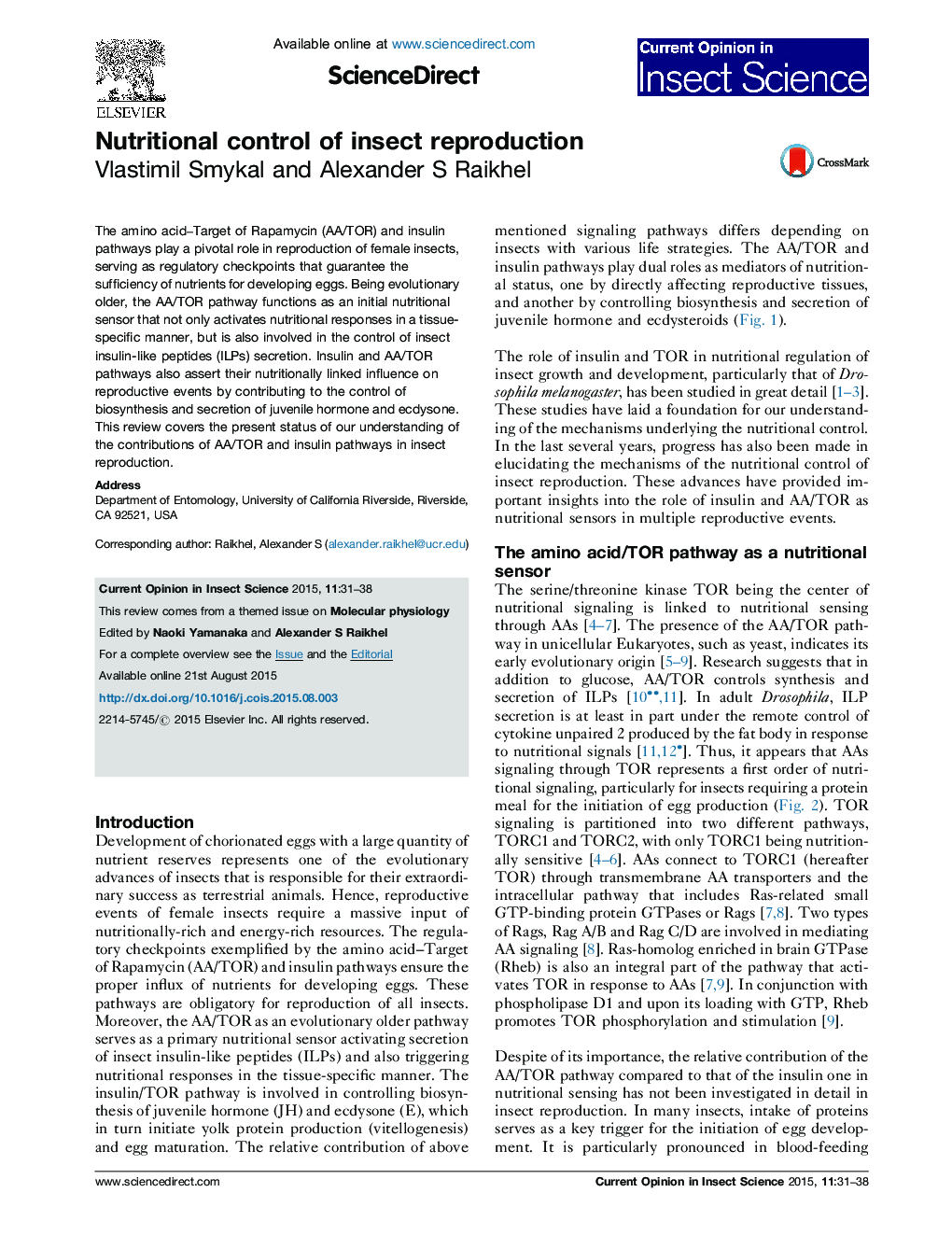| Article ID | Journal | Published Year | Pages | File Type |
|---|---|---|---|---|
| 4508165 | Current Opinion in Insect Science | 2015 | 8 Pages |
•AA/TOR pathway regulates synthesis and secretion of ILPs as shown for Drosophila.•ILPs represent a second nutritional checkpoint in regulation of reproduction.•ILPs autonomously control the development of ovarian niche stem units in Drosophila.•Insulin and TOR signaling pathways regulate JH and ecdysone biosynthesis.
The amino acid–Target of Rapamycin (AA/TOR) and insulin pathways play a pivotal role in reproduction of female insects, serving as regulatory checkpoints that guarantee the sufficiency of nutrients for developing eggs. Being evolutionary older, the AA/TOR pathway functions as an initial nutritional sensor that not only activates nutritional responses in a tissue-specific manner, but is also involved in the control of insect insulin-like peptides (ILPs) secretion. Insulin and AA/TOR pathways also assert their nutritionally linked influence on reproductive events by contributing to the control of biosynthesis and secretion of juvenile hormone and ecdysone. This review covers the present status of our understanding of the contributions of AA/TOR and insulin pathways in insect reproduction.
